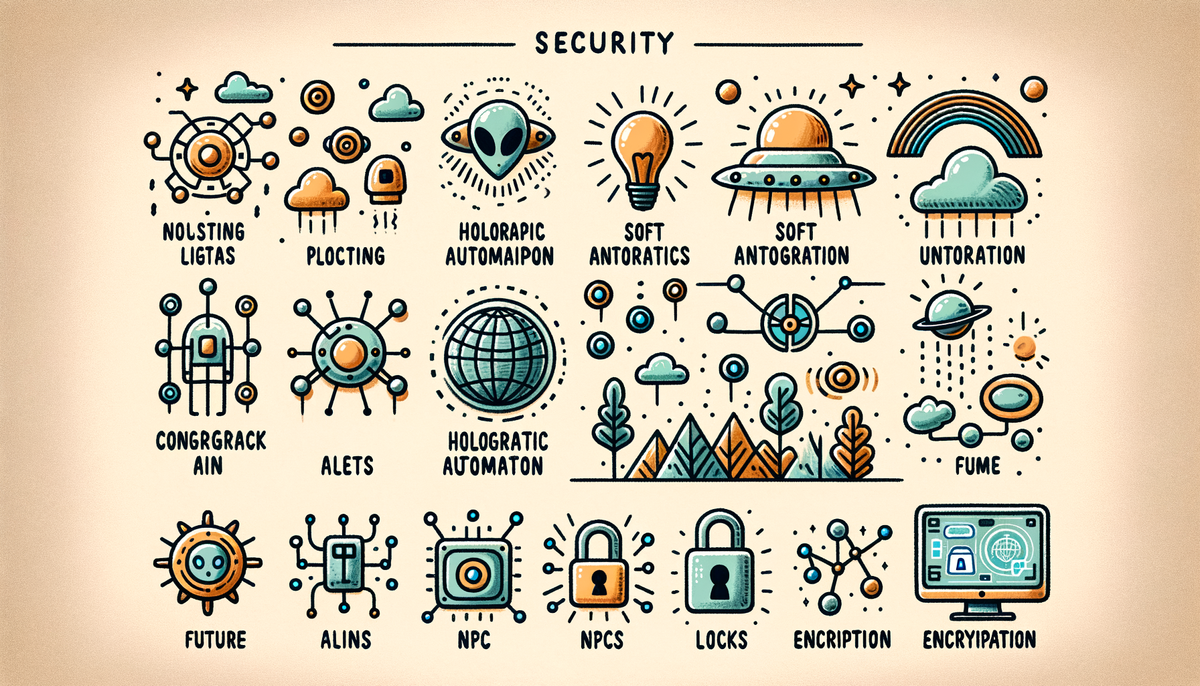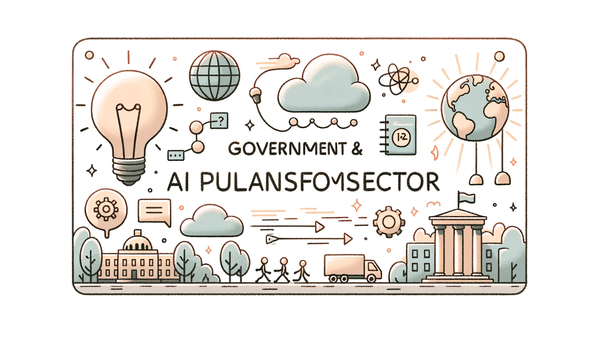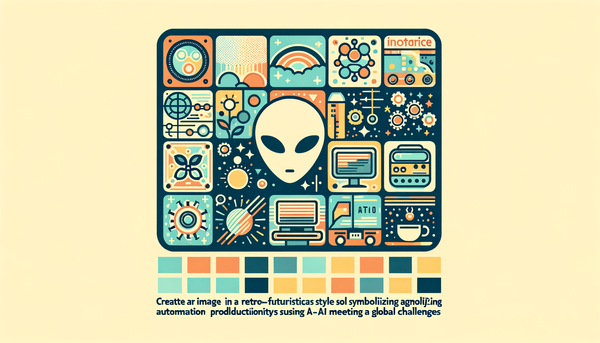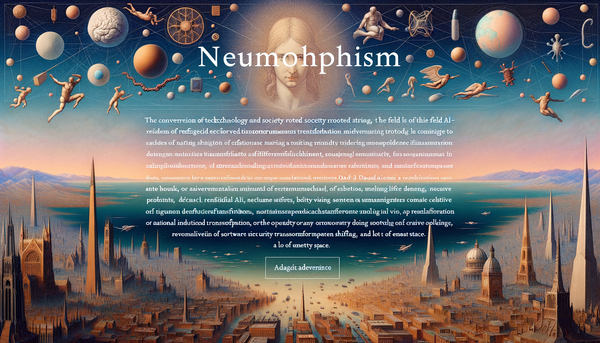Agentic AI: Security, Privacy, and Innovations

In a world where AI is steadily transforming industries—from destination marketing and personalized entertainment to space safety and user-centric operating systems—the focus has pivotted to reliability, enhanced user experience, and security in every facet of our digital lives.
Revolutionizing Destination Marketing with AI
Planny Drive’s launch of Planny 3.0 is a stellar example of how AI is innovating even the most traditional sectors. In the bustling cityscape of Tel Aviv, Planny 3.0 tackles the fragmented nature of travel automation by offering destination marketing organizations (DMOs) an AI platform that relies on verified data sources such as Google Maps and Booking.com. This move is more than just an incremental upgrade—instead, it offers DMOs a way to deliver real-time insights that ultimately enrich visitor experiences.
Jacov Mazor, the CEO of Planny Drive, has stated that the platform isn’t merely about automating routine tasks; it’s designed to enhance the accuracy and trustworthiness of travel recommendations. By dealing with the notorious issue of AI hallucinations—where a system might produce plausible yet incorrect recommendations—Planny 3.0 minimizes errors by cross-referencing data with live tourism trends. This is essential, considering that inaccurate information can mislead travelers and distort a region’s reputation.
Using Planny 3.0, DMOs can automate content updates and access visitor behavior analytics, providing them with the insights needed to fine-tune strategies. This integration of real-time data ensures that marketing efforts keep pace with the dynamic nature of tourism, making each recommendation both timely and accurate. This strategic use of AI is echoed by much of the industry’s recent initiatives, like those detailed in our Hallmarks of AI and Its Multifaceted Impact article.
AI in Consumer Electronics: The Untold Story
While Planny Drive is revolutionizing travel recommendations, the use of AI in consumer electronics has taken a subtler yet significant turn. Consider Universal Electronics and their exposure to IoT coupled with AI technology. Although details around their downsizing and market repositioning have been sparse, this strategy highlights a common trend: companies are leveraging their investment in AI to streamline operations and enhance connectivity.
The integration of AI with IoT devices is rapidly transforming everyday products into smart, interconnected systems. This development not only pushes the boundaries of user interactivity but also sets the stage for widespread improvements in efficiency and reliability in various industries—from smart homes to industrial automation. As AI melds with everyday devices, the potential for creating cohesive ecosystems becomes increasingly tangible.
Transforming Entertainment: The Voice of an AI DJ
The music streaming landscape is also undergoing a radical change, with Spotify leading the way with its AI DJ feature. This innovative tool allows users to interact with the platform in a conversational manner—simply by speaking to it. Imagine asking your digital DJ for a specific track like “Got any Spandau Ballet?” and receiving a curated playlist alongside engaging commentary delivered in a lifelike voice.
Originally introduced in early 2023, the AI DJ feature has steadily rolled out to regions such as the US, Canada, and later the UK. Now, with the introduction of upcoming voice control features, Spotify is set to further blur the lines between traditional radio interactivity and digital custom playlists. This evolution demonstrates the sheer versatility of AI in delivering personalized experiences.
One may draw an intriguing parallel between the personalized nature of travel recommendations in Planny 3.0 and the tailored music experiences provided by Spotify’s AI DJ—a testament to how AI can be applied to various areas of life to enhance decision making and personalization across the board.
Securing the Final Frontier: AI for Space Domain Awareness
In the realm of space, safety and precision have taken center stage with the collaboration between Voyager Technologies and Palantir Technologies. Their joint initiative is aimed at fortifying space domain awareness (SDA) by developing an AI-powered system that identifies, classifies, and tracks space debris and other objects in orbit. With orbital congestion on the rise, this AI solution is critical for averting potential collisions that could damage satellites and other orbital assets.
Integrating Voyager's prowess in advanced signal processing with Palantir's cutting-edge AI capabilities, the partnership is progressing from a TRL 4 to TRL 8 by 2026. This acceleration in technology readiness not only addresses space security concerns but also introduces a layered approach to national and international safety protocols in the final frontier.
"We are entering a new phase of artificial intelligence where machines can think for themselves." — Satya Nadella, CEO of Microsoft
This collaboration’s focus on meticulous real-time tracking and analysis ensures that space assets are better protected, heralding a new era where AI is an indispensable tool in safeguarding our orbital environment. For those interested in a comprehensive view of AI innovations, our complete piece on AI Innovations Transforming Our World provides further context.
Boosting Productivity: Windows 11 Recommendations and User Experience
Not all AI advancements are confined to specialized industries. In everyday technology applications, Windows 11 is experimenting with AI-driven recommendations to enhance user experience. The latest update in the Beta channel introduces a 'Recommended' panel in the Start menu, grouping frequently used apps such as WhatsApp and File Explorer for easier access. The idea is simple: leverage AI to analyze usage patterns and offer tools tailored for quicker workflow.
This update carries dual advantages. For many, it represents a clear pathway to enhanced productivity by reducing the time spent searching for applications and documents. On the other hand, it reduces the need for intrusive advertisements that have long plagued the user experience, thereby offering a more streamlined digital workflow.
However, it’s important to stress that some users, particularly in Europe, haven’t yet been included in this rollout, delaying their access to these improvements. Despite these regional discrepancies, the overall shift is a welcome sign of how AI can facilitate smoother interactions within our primary operating systems.
Leading the Scribe Revolution
Another arena where AI is making significant strides is in the realm of digital scribing and documentation. Although details from Axios’s coverage on Abridge have been brief, the sentiment is clear: AI-powered scribe solutions are evolving into indispensable tools for businesses, journalists, and academics alike.
Abridge is among the frontrunners driving this revolution, promising not only enhanced productivity in documentation but also improved accuracy in transcription. This is especially critical in sectors where the precision of data extraction and processing has far-reaching implications. By leveraging AI, tools like Abridge pave the way for faster, more efficient communication and record-keeping—a development that holds promise for a myriad of industries.
Such advancements echo the underlying theme of many AI-driven improvements today: enhancing human capabilities by reducing mundane tasks and ushering in an era where creativity and strategic decision-making are prioritized over repetitive functions.
Balancing Innovation with Security: The Privacy Challenge of Agentic AI
The rapid evolution of AI has not been free of challenges. At SXSW, Signal President Meredith Whittaker expressed formidable concerns about the security and privacy pitfalls inherent in agentic AI systems. These systems, designed to function as intelligent assistants, raise significant issues related to data privacy. For instance, performing tasks such as booking concert tickets may require these agents to access sensitive personal information—ranging from calendar details to financial data.
Whittaker’s analogy of "putting your brain in a jar" vividly captures the delicate balance between convenience and security. With the integration of AI agents into apps that traditionally focus on end-to-end encryption, like Signal, there is a palpable risk that sensitive information might be processed on cloud platforms and become vulnerable to breaches.
This concern reflects a broader dialogue in the tech community about ensuring that the impressive innovations brought by AI do not come at the cost of personal privacy. As we develop more intricate systems capable of deeply integrating into our lives, the imperative to protect user data becomes increasingly crucial. Addressing this challenge will require collaboration between technologists, policymakers, and users themselves.
The Wider Implications and Future Trajectory of AI
The vast array of applications showcased—from travel and music to space and personal computing—indicates that AI is not a singular technology confined to niche fields, but rather a multi-dimensional innovation poised to impact every aspect of daily life. Companies across various sectors are harnessing AI not just for its ability to automate processes, but for its powerful capacity to augment human capabilities.
Academic research and industry insights alike continue to affirm the transformative potential of AI. In particular, the emphasis on verifiable data and cross-referencing systems—evidenced by Planny 3.0’s design and the space domain awareness initiatives—illustrates a mature phase of AI development where accuracy and security are non-negotiable. In many ways, this mirrors the journey of AI from its early, experimental days to its present role as a robust, reliable augmentation of human decision-making.
On the entertainment front, Spotify’s conversational AI DJ stands out as a charming example of how interactive technology can redefine cultural consumption. Integrating voice recognition and natural language processing, such systems showcase how AI can not only process data but also engage with users in a distinctly human way. It conjures images of a not-too-distant future where every aspect of life is enhanced by intelligent, context-aware systems.
This trend is further underpinned by the increasing importance of cybersecurity and privacy safeguards. As remarked by experts like Meredith Whittaker and echoed by thought leaders across various platforms, ensuring robust privacy policies in the deployment of AI systems is essential to maintain public trust as we journey deeper into this digitized future.
Interconnections and Synergies in the AI Landscape
Across all these sectors, a common thread emerges: AI is not just a tool for automating tasks, but a catalyst for creating new synergies between technology and human experience. The integration of AI systems—be it in transforming how destination marketing organizations interact with travelers or in enabling secure space surveillance—underscores the necessity of a holistic approach to innovation.
For example, the AI enhancements in Windows 11 that curate resources via a recommended panel share an underlying philosophy with Planny 3.0’s real-time data verification: both prioritize user-centric design and actionable insights. Similarly, the personalized experience provided by Spotify’s AI DJ has its counterpart in the digital scribe solutions paving the way for more efficient documentation workflows.
Moreover, moving forward, the implementation of AI in these divergent areas hints at a future where technology is interwoven into the fabric of society in unpredictable yet profoundly beneficial ways. Researchers and practitioners are increasingly calling for frameworks that emphasize transparency and the ethical use of AI, aiming to mitigate the risks highlighted by potential privacy breaches while maximizing innovation. It is a balancing act—one that calls for constant vigilance, interdisciplinary collaboration, and a commitment to building trustworthy systems.
Another enlightening perspective is offered in our in-depth overview on AI and its role in security, education, and innovation, which examines how AI strategies are being tailored to address both the opportunities and risks in our tech-centric era.
Looking Ahead: The Enduring Impact of AI
It’s clear now that we stand at a pivotal juncture where AI is reshaping the dynamics of industries, redefining how we interact with technology on a day-to-day basis, and setting the stage for future innovations that we can only begin to imagine. The partnerships and advancements discussed—from Planny Drive’s verified travel recommendations to Voyager and Palantir’s space domain awareness solutions—all signal that this is merely the beginning.
For industry leaders, the message is unambiguous: embrace AI with a clear focus on accuracy, security, and user empowerment. This sentiment is encapsulated aptly by Fei-Fei Li’s observation that, "Artificial intelligence is not a substitute for natural intelligence, but a powerful tool to augment human capabilities." Such an approach not only mitigates the risks associated with rapid technological changes but also underscores the potential for AI to complement and elevate human ingenuity.
The synergies across sectors hint at a future where AI forms the backbone of digital transformation, enhancing not only efficiency but also the quality of human experiences. As we continue to refine these technologies, the emphasis will undoubtedly remain on striking the right balance between innovation and the core values of privacy and security.
Recent investment trends discussed in our DeepSeek: The Investment Tipping Point in AI segment further illustrate that the AI revolution is set to gain even more momentum, with both established companies and startups recognizing the expansive possibilities ahead.
Highlights from an AI-Transformed World
The evolving story of AI is one of relentless innovation, careful consideration of data integrity, and an ever-present commitment to user-centric design. From enhancing the tourist experience with platforms like Planny 3.0, to the playful yet profound transformation in how we consume music with Spotify’s AI DJ, and even to the strategic defense mechanism in space technology—the spectrum of AI applications is endlessly fascinating.
These advancements not only drive efficiency in established sectors but also open up entirely new avenues for growth and innovation. While challenges such as data privacy and algorithmic transparency are being actively debated, the overarching narrative is one of transformative potential and informed optimism.
As our exploration of these multifaceted impacts shows, the future of AI is bright, albeit with complexities that call for measured oversight and ethical innovation. In the dynamic interplay of technology, strategy, and human creativity, the credo remains to empower rather than replace, to support rather than supersede. And in that spirit, the AI revolution marches on.




